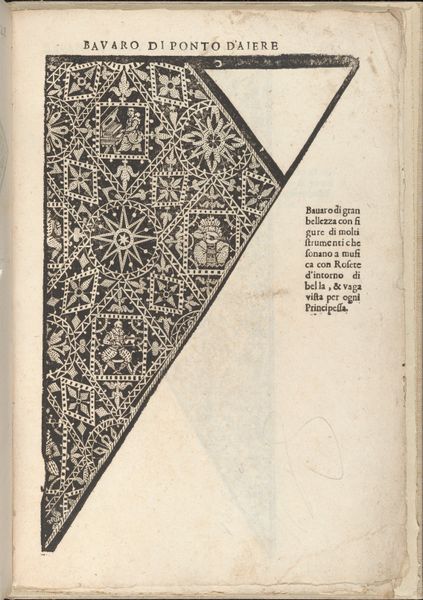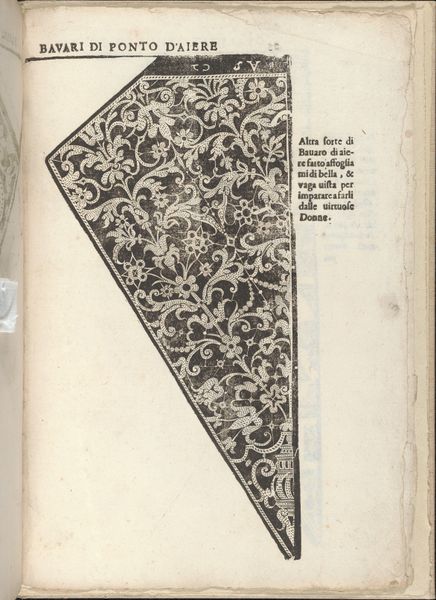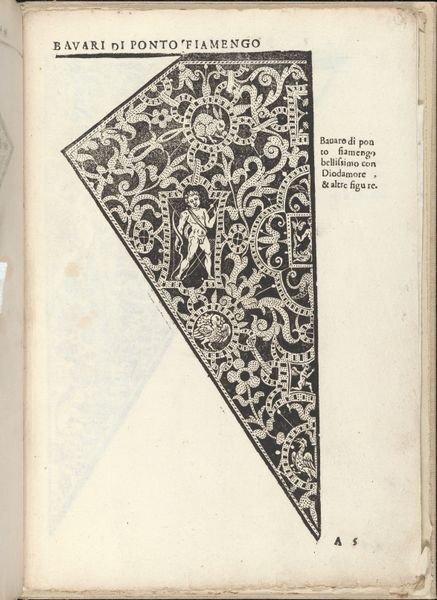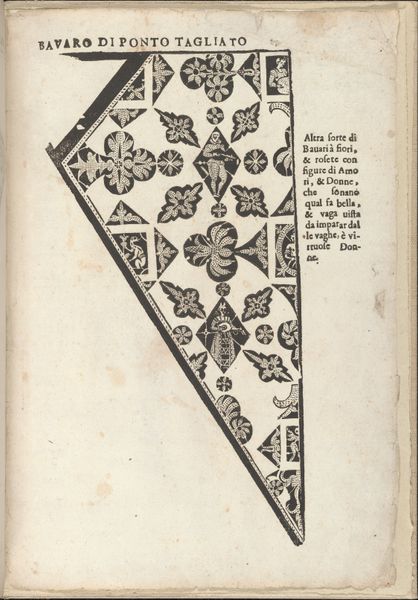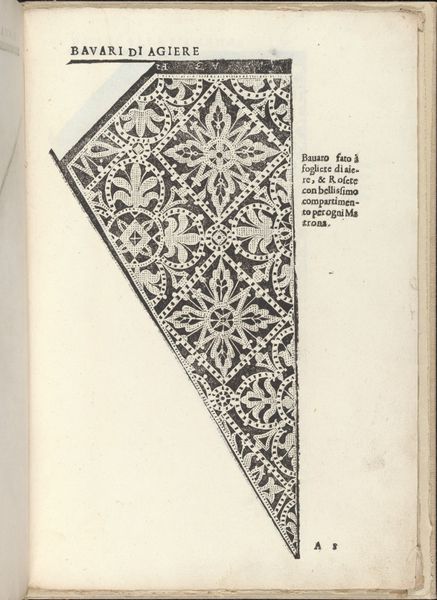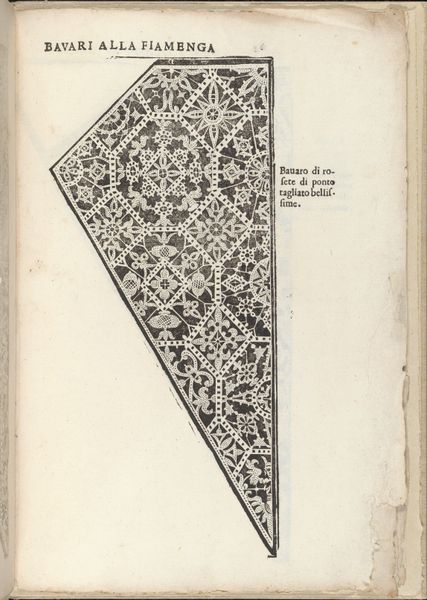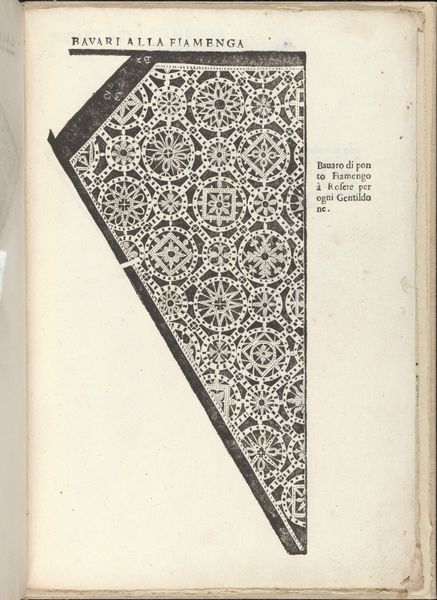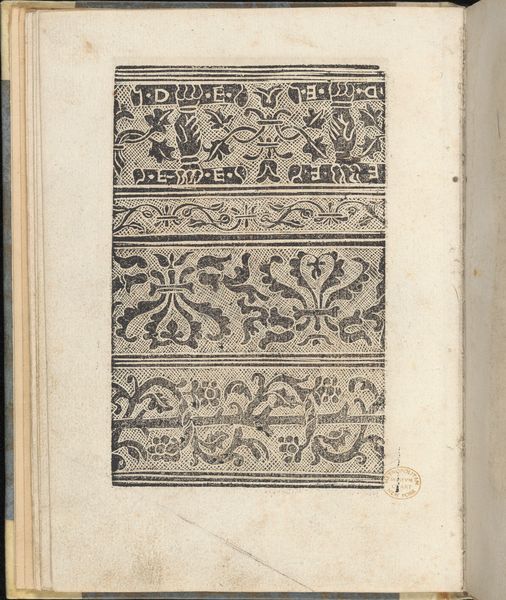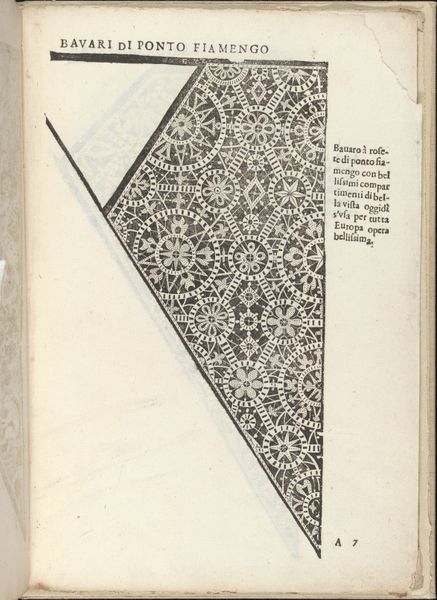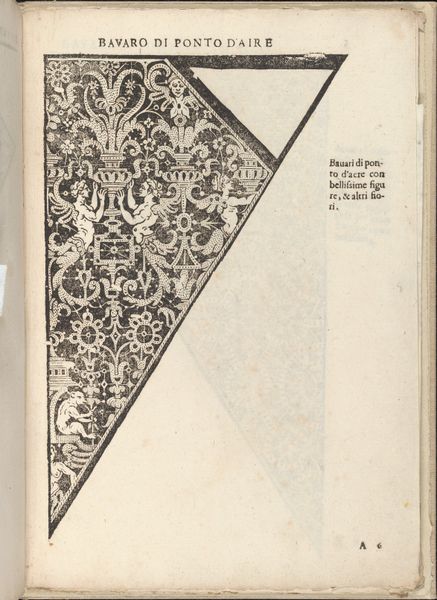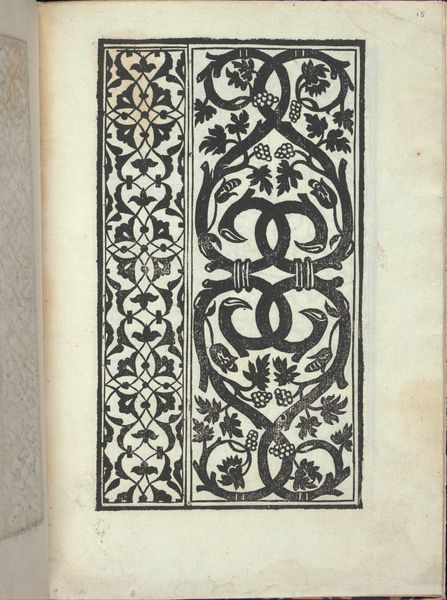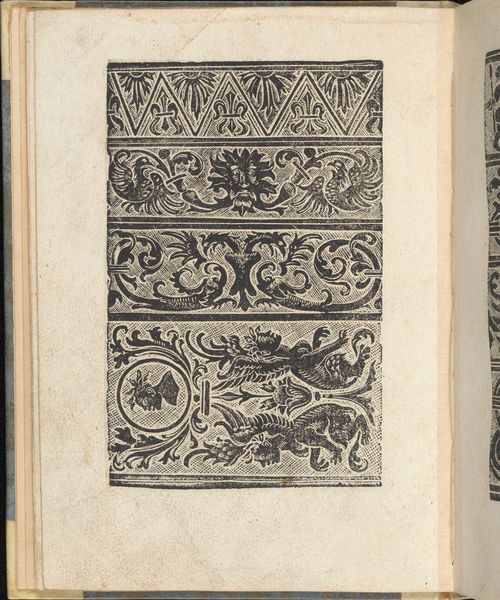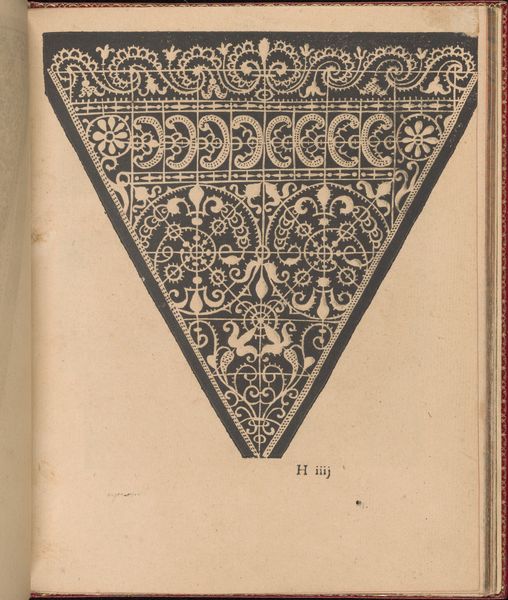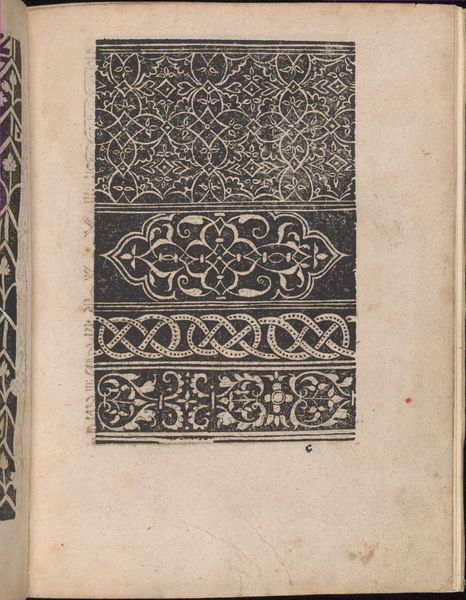
Ornamento nobile...Fatta da Lucretia Romana (Libro V of the Corona), page 13 (recto) 1620
0:00
0:00
drawing, ornament, print, engraving
#
drawing
#
ornament
# print
#
book
#
sketch book
#
engraving
Dimensions: Overall: 12 3/16 x 8 1/4 in. (31 x 21 cm)
Copyright: Public Domain
Curator: Immediately striking, isn’t it? There's a certain austere elegance. Editor: Yes, the high contrast really pops. It reminds me of a stencil or block print. I find the rigid geometry juxtaposed with the organic ornamentation quite compelling. What can you tell me about this particular page? Curator: We're looking at "Ornamento nobile…Fatta da Lucretia Romana," a design featured on page 13 of Libro V of the Corona, dating back to 1620. The Corona, or "Crown", showcases the talents of Cesare Vecellio. It resides here at The Met and is a magnificent example of Italian Renaissance ornament. Editor: Renaissance design manuals served as both practical guides and assertions of cultural status, particularly for women learning such refined artistic crafts. This one seems ripe for symbolic analysis. Tell me about it! Curator: Vecellio's compendium features a vast array of patterns. It was intended to give artisans, especially women, patterns to reproduce or take inspiration from when designing needlework, lace and other decorations. We can think about them as influencers ahead of their time. These pages showcase everything from geometric and floral to figural compositions. The “bavari di ponto a iere” or lace border pattern, gives insight into this time’s cultural landscape by its deliberate construction of elite status and female virtue through refined, fashionable handicrafts. Editor: The visual repetition feels both decorative and disciplined. Looking beyond face value, how was it really supposed to function in society? Was it meant to empower or reinforce constraints around a woman's identity and role at the time? I mean, the idea of Lucretia being its author hints at ideas around chastity, even female sacrifice and artistic labor. Curator: Your observation adds an important critical layer. We can read it on one hand, as expanding opportunity for female artisans by giving them resources, but simultaneously framing their creative outputs through a lens of virtue and appropriate behavior, which is very thought-provoking. Editor: Absolutely, which brings this simple ornamentation into a conversation about gender roles and social structures during the Renaissance. Now I'm left considering, whose voice, or whose interest this guide was intended to really serve? Curator: Excellent food for thought indeed! Considering these historical documents alongside contemporary viewpoints truly enriches our understanding of the artwork, wouldn't you agree? Editor: It most certainly does. Thanks for sharing.
Comments
No comments
Be the first to comment and join the conversation on the ultimate creative platform.
